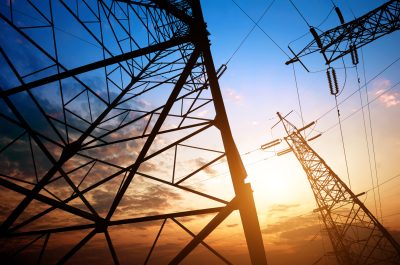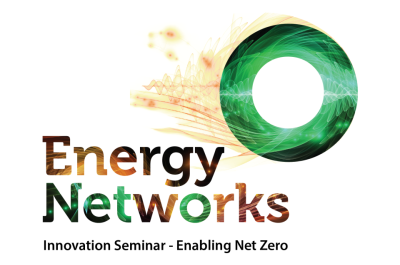Don’t fence out innovative solutions
The Energy Security Board (ESB) has previously drawn attention to the importance of ring-fencing keeping up with fast-evolving technological developments in the energy sector.[i] Reflecting the impact that emerging technologies and the energy market transition are having on existing regulatory frameworks, the Australian Energy Regulator (AER) has released an issues paper that seeks stakeholder feedback on potential changes to its Electricity Distribution Ring-fencing Guideline. We look at the current framework and what needs addressing to ensure that it delivers for customers.
What is ring-fencing?
Electricity networks are natural monopolies, and the AER determines the amount of revenue they can recover from consumers for the provision of regulated services. This is done under an incentive-based system that continuously encourages networks to find better ways to efficiently service customers.
Ring-fencing is the identification and separation of these regulated activities, costs, and revenues from those associated with the network providing services in a competitive market. It aims to prevent the harm that could result from cross-subsiding and discriminatory behaviour.
Importantly, the benefit, or likely benefit, to consumers must outweigh the cost to the network provider of complying with ring-fencing obligations. Ring-fencing obligations should represent a targeted, proportionate, and effective regulatory response to the potential harm faced by customers.[ii]
The energy transition & technological advancements
Australia’s energy system is undergoing a significant transition, moving away from centralised, large-scale coal and gas generation to smaller scale, increasingly renewable, dispersed generation. In the past decade, renewable (wind and solar) generation as a share of total National Electricity Market (NEM) generation has risen from 2 per cent in 2009 to 16 per cent in 2019.[iii] This transformation is occurring both at a network grid scale and at the individual customer level, with parts of the NEM having some of the world’s highest levels of residential solar PV.[iv]
Coupled with this, there have been strong technological advancements in energy storage and stand-alone power systems (SAPS) that change the economics of their adoption, along with further recognition of the role SAPS play in natural disasters.
The intersection of these changes within the existing regulatory framework has led the AER to release an issues paper that considers whether its approach to ring-fencing needs to adapt to support and enable adoption of these innovative technologies by networks.
What do we need to change?
In our transitioning energy system, the regulatory framework needs to allow businesses to provide innovative solutions that are in the long-term interests of customers. In this respect, it is entirely logical that this review occurs, and we strongly support the development of a framework that ensures consumers can benefit from networks’ adoption and use of technologies such as energy storage devices and SAPS.
Stand-alone power systems
The AEMC’s proposed SAPS framework, currently with the Australian Government for consideration, splits SAPS functions between distribution services (SAPS distribution system) and non-distribution services (SAPS generating system), which then kicks in the AER’s ring-fencing framework.
The AER’s existing Electricity Distribution Ring-fencing Guideline restricts distributors from providing non-distribution services and, under the current guideline, a distributor cannot provide an integrated SAPS solution unless a ring-fencing waiver is obtained. Only once a waiver is granted can the distributor begin the process to roll out an integrated SAPS to customers. The theory is that competitive markets are the answer for the non-distribution services, but this seems to the reality that the prime candidates for SAPS are at the very edge of existing grids, almost always in regional and remote areas.
The customer benefits of SAPS are well-known, offering greater reliability and improved safety. However, relying on a bureaucratic waiver process to navigate a theoretical competitive market will likely result in a delay to a rollout of SAPS and therefore risk detrimental customer outcomes.
A positive outcome for this AER-led review would be a simplified and streamlined process to SAPS exemptions that ensures networks can roll-out SAPS where there are clear customer benefits in doing so.
Energy storage devices
The AER’s existing service classifications and ring-fencing framework limit networks’ ability to provide certain energy storage services to consumers. For example, network batteries represent an increasingly efficient option to address local network issues such as peak/minimum demand and voltage regulation. However, without going through the waiver process, networks are precluded from increasing the viability of these services by, for example, leasing out spare capacity or offering customers access to a shared storage service. This is commonly referred to as value stacking and allows the same storage device to be used for multiple purposes.
We need to make sure the existing regulatory framework, including how services are classified and how ring-fencing is approached, does not inhibit the deployment of energy storage devices where it is in the long-term interests of consumers. Networks are increasingly looking to explore ways in which services from energy storage devices, such as community batteries, can deliver good outcomes for customers.
Next steps
Energy Networks Australia will actively participate in this review and looks forward to continuing to work constructively with the AER to ensure that ring-fencing supports the adoption of new technologies by network businesses. The focus must remain on positive customer outcomes– the focus must be on the likely end customer outcomes rather than the simple promotion of theoretical competition benefits.
The Energy Security Board is correct in saying that ring-fencing should not place unnecessary constraints that inhibit innovation, especially in our transitioning energy system.
[i] Energy Security Board, Health of the National Electricity Market Volume 1, 24 February 2020, page 39.
[ii] Australian Energy Regulator, Ring-fencing Issues Paper, November 2020.
[iii] Australian Energy Regulator, Data – State of the energy market 2020 – Chapter 2 National electricity market – Figure 2.13 – Wind and solar generation share of total generation, June 2020.
[iv] Australian Energy Market Operator, Renewable Integration Study: Stage 1 report, April 2020, page 6.



